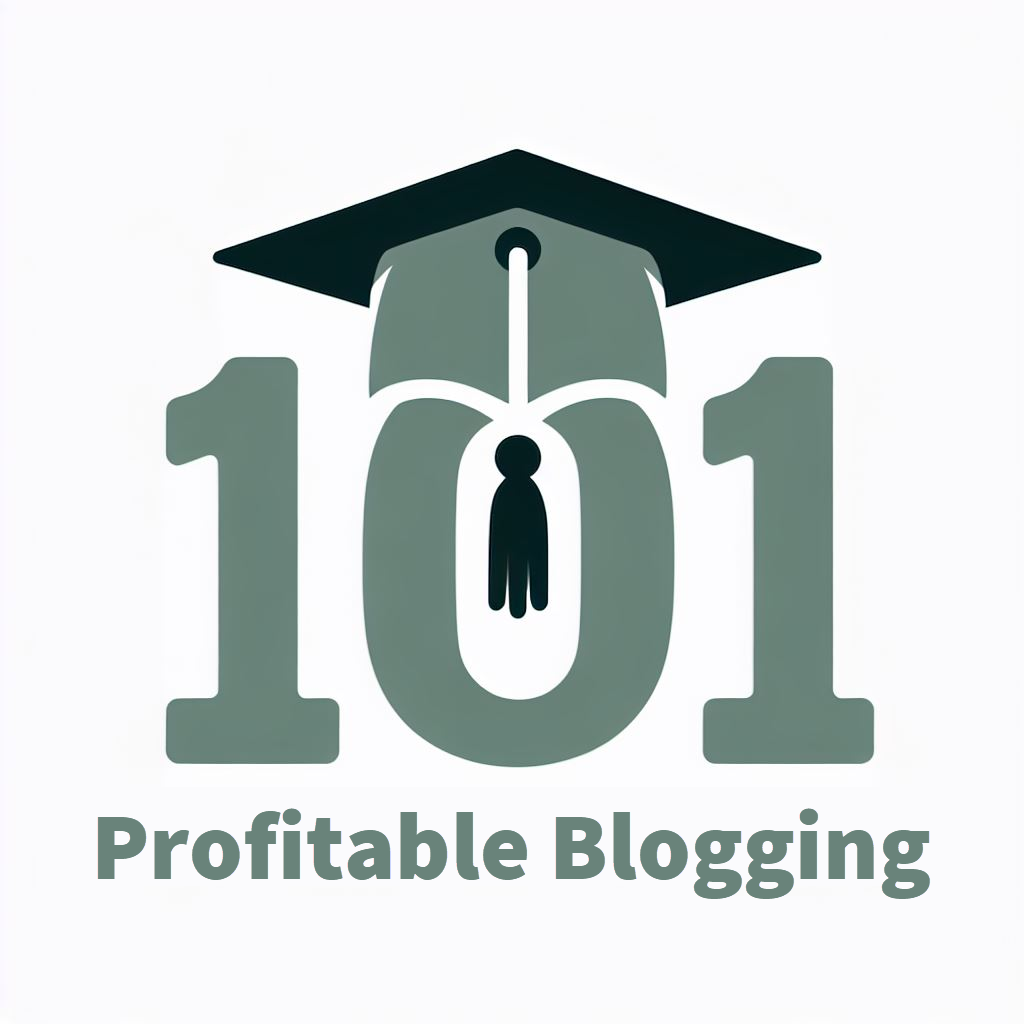Data-Driven Decisions: Using Analytics to Inform Your Blogging Strategy
To elevate your blogging game, harnessing the power of data-driven decisions is paramount. By honing in on analytics, you can access a treasure trove of insights that can steer your strategy towards success.
But how exactly do you navigate this sea of data to make informed choices that resonate with your audience and enhance your blog's performance? Let's explore the art of utilizing analytics to not only shape but also refine your blogging approach for maximum impact.
Importance of Data-Driven Decisions
Harnessing the power of data to drive your decisions is essential in developing a successful blogging strategy. By analyzing metrics such as page views, bounce rates, and conversion rates, you gain valuable insights into what resonates with your audience. Understanding which topics generate the most engagement allows you to tailor your content to meet their preferences. Data empowers you to optimize your blog for search engines, increasing your visibility and attracting more readers.
Additionally, data-driven decisions enable you to track the performance of your blog over time. By monitoring key performance indicators (KPIs) regularly, you can identify trends, capitalize on successful strategies, and adjust those that are underperforming. This iterative process of analysis and adjustment is critical for the continuous improvement of your blogging efforts.
Choosing the Right Analytics Tools
When selecting the right analytics tools for your blogging strategy, consider the specific metrics that align with your goals and audience engagement. The plethora of analytics tools available can be overwhelming, so it's important to focus on those that provide insights tailored to your objectives. Look for tools that track metrics like page views, unique visitors, bounce rates, and conversion rates to gauge the performance of your blog posts effectively. Additionally, tools that offer demographic information, referral sources, and popular keywords can help you better understand your audience and tailor your content accordingly.
Google Analytics is a popular and robust choice for tracking a wide range of metrics, including user behavior and acquisition data. Other tools like SEMrush and Moz can provide valuable insights into SEO performance and keyword optimization. Social media analytics tools such as Sprout Social or Hootsuite can help you track engagement on various platforms. By carefully selecting analytics tools that align with your blogging goals, you can make informed decisions to optimize your content strategy and drive audience engagement.
Identifying Key Performance Indicators
To effectively refine your blogging strategy, the first step involves pinpointing the key performance indicators that align with your specific goals and audience engagement metrics. Identifying these KPIs is essential for measuring the success of your blog and making data-driven decisions.
Here are four key performance indicators to take into account:
- Traffic Sources: Understand where your blog traffic is coming from to focus on channels bringing the most visitors.
- Engagement Metrics: Monitor metrics like average time on page, bounce rate, and social shares to gauge how visitors are interacting with your content.
- Conversion Rates: Track the percentage of visitors completing desired actions, such as signing up for a newsletter or making a purchase.
- Audience Demographics: Analyze the characteristics of your audience, including age, location, and interests, to tailor your content to their preferences.
Analyzing Audience Behavior Patterns
Understanding audience behavior patterns is essential for optimizing your blogging strategy and boosting audience engagement. By analyzing how your audience interacts with your content, you can tailor your blog posts to better meet their needs and preferences. Look at metrics like page views, time spent on page, bounce rate, and click-through rates to gain insights into what resonates with your audience. Are there specific topics that drive more engagement? Do certain types of content lead to higher retention rates? Identifying these patterns allows you to create more targeted and compelling content that keeps your audience coming back for more.
Additionally, tracking audience behavior patterns can help you refine your posting schedule. By understanding when your audience is most active and engaged, you can optimize the timing of your blog posts for maximum impact. This data-driven approach guarantees that you're reaching your audience at the right moments, increasing the likelihood of interaction and sharing. Keep a close eye on audience behavior trends to continuously refine and enhance your blogging strategy for sustained success.
Optimizing Content for SEO
Analyzing audience behavior patterns provides valuable insights that can guide your approach to optimizing content for SEO. To make sure your content is well-optimized, consider the following key points:
- Keyword Research: Conduct thorough keyword research to understand what terms your audience is searching for. Use tools like Google Keyword Planner to identify relevant keywords with high search volumes.
- Quality Content: Create high-quality, engaging content that provides value to your readers. Google prioritizes content that's informative, well-written, and relevant to the search query.
- Meta Tags Optimization: Optimize your meta tags, including title tags and meta descriptions, with relevant keywords to improve your click-through rate from search engine results pages.
- Internal Linking: Utilize internal linking to connect related content within your website. This helps search engines understand the structure of your site and can improve your SEO rankings.
Leveraging Social Media Insights
Leveraging social media insights requires strategic analysis of audience engagement metrics and trends. By delving into the data provided by platforms like Facebook, Instagram, and Twitter, you can uncover valuable information about your audience's preferences and behaviors. Look closely at metrics such as likes, shares, comments, and click-through rates to understand which types of content resonate most with your followers. Analyzing the timing of engagement can also help you determine the best times to post for maximum impact.
Utilize social media analytics tools to track key performance indicators and identify patterns in your audience's interactions. Pay attention to which posts generate the most engagement and adjust your content strategy accordingly. By leveraging these insights, you can tailor your content to better meet the needs and interests of your audience, ultimately driving more traffic to your blog.
Tracking Conversion Rates
To optimize your blogging strategy effectively, tracking conversion rates is essential for measuring the success of your content in converting readers into taking desired actions. Here are four key points to contemplate when tracking conversion rates:
- Set Clear Goals: Define specific actions you want your readers to take, such as signing up for a newsletter, downloading a resource, or making a purchase.
- Utilize Tracking Tools: Use analytics tools like Google Analytics or social media insights to monitor conversion rates and track user behavior on your blog.
- Monitor Performance: Regularly review conversion rate data to identify trends, understand what's working well, and pinpoint areas for improvement.
- A/B Testing: Experiment with different strategies, layouts, or calls-to-action to see what drives the highest conversion rates and optimize your content accordingly.
Improving User Experience With Data
Improving user experience with data involves harnessing insights from user interactions to enhance the overall functionality and satisfaction of your blog. By analyzing user behavior such as click-through rates, time spent on page, and popular content, you can tailor your blog to better meet the needs and preferences of your audience.
Utilizing heatmaps and scroll maps can provide valuable information on how users engage with your content, allowing you to optimize layout and design for improved user experience.
Additionally, A/B testing different elements on your blog, such as headlines, images, or call-to-action buttons, based on data-driven insights can help you understand what resonates best with your audience. This iterative process of testing and refining based on data can lead to significant enhancements in user experience and ultimately drive higher engagement and conversion rates on your blog.
Personalizing Content Recommendations
Harness the power of data analytics to deliver personalized content recommendations tailored to your audience's interests and preferences. By leveraging analytics effectively, you can enhance user experience and drive engagement on your blog.
Here's how you can personalize content recommendations for your audience:
- Utilize User Behavior Data: Analyze how users interact with your content, such as which articles they read most frequently or how long they stay on a page.
- Segment Your Audience: Divide your audience into groups based on demographics, interests, or browsing behavior to offer targeted recommendations.
- Implement Machine Learning Algorithms: Use algorithms to predict what content a user is likely to enjoy based on past behavior and preferences.
- Dynamic Content Personalization: Tailor content recommendations in real-time to provide a customized experience for each visitor.
A/B Testing for Blog Success
By testing different elements on your blog, such as headlines, layouts, or call-to-action buttons, you can optimize performance and drive increased engagement – a strategy known as A/B testing for blog success. A/B testing involves presenting two versions of a specific element to different sets of your audience and analyzing which one performs better. This method allows you to make data-driven decisions about your blog content and design.
When conducting A/B tests, it's essential to focus on one variable at a time to accurately measure its impact. For instance, you could test two different headlines for the same blog post to see which one attracts more clicks. By systematically testing various elements, you can uncover valuable insights into your audience's preferences and behaviors.
Monitoring and Adjusting Strategy
To effectively enhance your blogging strategy, meticulous monitoring and strategic adjustments are imperative for sustained growth and impact. By closely analyzing your blog's performance metrics and making informed changes, you can optimize your content and reach a wider audience.
Here are four key steps to effectively monitor and adjust your strategy:
- Regular Performance Analysis: Continuously track key performance indicators like traffic, engagement rates, and conversion metrics to identify trends and areas for improvement.
- Audience Feedback Incorporation: Actively listen to your audience through comments, surveys, and social media interactions to understand their preferences and tailor your content accordingly.
- Competitor Benchmarking: Keep an eye on your competitors' strategies and performance to gain insights into what works well in your niche and adapt your approach accordingly.
- Agile Strategy Implementation: Be flexible and willing to experiment with new ideas, adjusting your strategy based on real-time data and feedback to stay ahead of the curve.
Frequently Asked Questions
How Can Data-Driven Decisions Help in Understanding the Emotional Impact of Blog Content on Readers?
By analyzing data, you can gauge the emotional impact of your blog content on readers. Insights from analytics reveal trends in engagement, sentiment, and reactions, guiding you to tailor your writing to effectively connect with your audience.
What Are Some Common Challenges Bloggers Face When Implementing Analytics Tools for Their Strategy?
When implementing analytics tools for your blog strategy, common challenges include data overload, lack of interpretation skills, and difficulty in translating data into actionable insights. Focus on understanding key metrics to optimize performance effectively.
How Can Bloggers Effectively Measure the Success of Their Content's Engagement With Different Audience Segments?
To measure content engagement across audience segments effectively, you'll need to utilize analytics tools that provide detailed insights. Segment your audience based on relevant criteria and track metrics like click-through rates, time spent on page, and social shares to gauge success.
Is There a Recommended Approach for Bloggers to Analyze the Impact of Social Media Influencers on Their Content Performance?
To analyze the impact of social media influencers on your content performance, track metrics like engagement, click-through rates, and conversions. Identify patterns in influencer collaborations that lead to increased audience interaction and adjust your strategy accordingly.
How Can Bloggers Use Data to Predict Future Trends in Their Industry and Adjust Their Strategy Accordingly?
To predict future trends, analyze past data trends for insights. Track key metrics like engagement rates, click-through rates, and audience demographics. Adjust content strategy based on data findings to stay ahead in your industry.
Conclusion
To sum up, harnessing the power of data analytics in your blogging strategy can lead to more informed decisions and ultimately drive success. By utilizing the right tools, identifying key performance indicators, and analyzing audience behavior patterns, you can optimize your content, improve user experience, and personalize recommendations.
A/B testing and continuous monitoring allow for strategic adjustments to further enhance your blog's performance. Embrace the data-driven approach to elevate your blogging game and achieve your goals with precision and insight.







